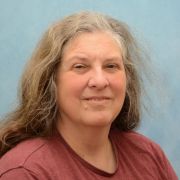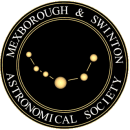GW170817: The birth of a new Astronomy
Guest Speaker
Thursday, 25th January 2018 (19:45 - 22:00)
Venue: swmcmeet
Gamma-ray bursts are one of the most energetic phenomena in the universe. They come in two varieties: long bursts, which are convincingly associated with an unusual, very bright class of supernovae, and short bursts, which certainly are not associated with supernovae. A favoured explanation for the short bursts has long been that they are caused by the merger of a pair of neutron stars. This is also one of the types of system that the LIGO gravitational-wave observatory was designed to observe. However, at the time that advanced LIGO turned on in 2015, no short GRB had ever been observed within aLIGO's design range. In 2014, a review article on short GRBs concluded, "though joint GW and short GRB detections will play a critical role in establishing the identity of the progenitors, and will provide particularly bright counterparts, such detections are expected to be rare."
However, sometimes Nature can be kind. Astonishingly, the very first neutron star merger observed by aLIGO, on the 17th of August 2017, turned out to be associated with a short gamma-ray burst. This GRB was ten times closer than any previously observed short gamma-ray burst, and unusually faint--perhaps because we were looking at it from a slightly less than optimal direction--but it is still enough to provide the "the clearest smoking gun for the compact object merger model" (to quote the 2014 article again). Furthermore, the "kilonova" outburst predicted to occur as a result of the neutron star merger was observed over the whole electromagnetic spectrum from X-rays to radio. This event therefore provides unprecedented insight into these rare events and their consequences, including a confirmation that neutron star mergers contribute to the production of many heavy elements, including gold and uranium.
In this talk, I will try to summarise the findings from the dozens of papers that have been and will be written about this event, and discuss the future of multi-messenger astronomy.
Speaker: Dr. Susan Cartwright
Dr Susan Cartwright graduated from Glasgow University with a BSc in Astronomy and Natural Philosophy (Physics, to most people - but if Natural Philosophy was good enough for Newton it was good enough for Glasgow!).
She then did a PhD in particle physics, also at Glasgow, and worked in Hamburg, Germany and San Francisco before arriving in Sheffield in 1989. She is currently working on neutrino oscillations with the T2K experiment in Japan(which, incidentally, doesn't have any evidence that neutrinos travel faster than light - though it does have evidence that accelerators don't much like earthquakes).

